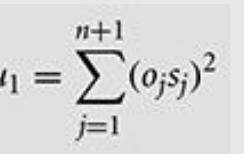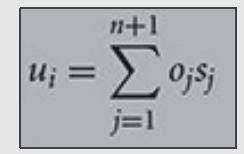
Mathematics, 16.10.2020 06:01 rodrickahammonds
Consider the problem of utility over territory. Let’s start simply
with a one-dimensional representation. Consider two actors, 1
and 2, with utility functions defined over a single-dimensional
issue space X = [0, 1], but where the actors can own sections or
“provinces” of the interval. The boundaries between sections are
defined by a vector B = (b1, b2, b3, . . . , bn, 1).
Thus, there are n+ 1 provinces. Define a “size” vector containing the lengths of
each province, S = (b1, b2 − b1, b3 − b2, . . . , 1 − bn). Define for
each actor an “ownership” vector Oi with 1s in the place of the
provinces that it owns and 0s elsewhere.
1. Assume that each actor’s utility function is a simple sum of
how much of the space they own so ui=∑n+1,j=1, oj, sj
(a) Can the players both be made better off by exchanging
existing provinces?
(b) Can the players both be made better off by altering the
boundaries of the existing provinces while preserving the
ownership structure?
(c) Can the players both be made better off by reducing the
number of provinces – for instance, by consolidating
contiguous provinces that are owned by the same actor?
2. Now assume that the utility function is a function of the sum
of the squares of the provinces owned, indicating that there are
increasing returns to the size of a province ui=∑n+1,j=1, (oj, sj)^2
(a) Can the players both be made better off by exchanging
existing provinces (without doing anything else)?
(b) Can the players both be made better off by reducing the
number of provinces – for instance, by consolidating
contiguous provinces that are owned by the same actor?
(c) If the actors are free to adjust both the number of
provinces and the ownership structure, what set of
boundaries is Pareto optimal with this utility function?
2.2 (see formula in the attachments) Consider two states, state 1 and state 2, which can unilaterally
set their tariff rates on imported goods, ti ≥ 0. Each state has an
ideal level for its own tariff, and prefers that the other
side’s tariff be 0, Assume that each side’s utility declines
with the distance between the tariff levels and their ideal point,
as follows
1. Draw the t1, t2 quadrant and draw in the ideal points for each
player.
2. Draw in sample indifference curves for the two states around
their ideal points. What shape are they?
3. Draw in the contract curve between the two ideal points. What
shape is it and why? What equation describes it?
4. The contract curve divides the t1, t2 quadrant into two regions.
How do they differ in terms of how the players could realize
joint gains in each region?
2.3 Consider the utility function u(x) = xρ, where ρ > 0 and x ∈ [0,
1]. Under what conditions would a player with such preferences
be risk acceptant, risk neutral, and risk averse?




Answers: 1
Another question on Mathematics

Mathematics, 21.06.2019 16:10
In a sample of 200 residents of georgetown county, 120 reported they believed the county real estate taxes were too high. develop a 95 percent confidence interval for the proportion of residents who believe the tax rate is too high. (round your answers to 3 decimal places.) confidence interval for the proportion of residents is up to . would it be reasonable to conclude that the majority of the taxpayers feel that the taxes are too high?
Answers: 3

Mathematics, 21.06.2019 18:30
Haruka hiked several kilometers in the morning. she hiked only 66 kilometers in the afternoon, which was 25% less than she had hiked in the morning. how many kilometers did haruka hike in all?
Answers: 3


Mathematics, 21.06.2019 22:00
Mr.walker is looking at the fundraiser totals for the last five years , how does the mean of the totals compare to the median?
Answers: 1
You know the right answer?
Consider the problem of utility over territory. Let’s start simply
with a one-dimensional represent...
Questions


Chemistry, 03.02.2020 04:53

Biology, 03.02.2020 04:53



Mathematics, 03.02.2020 04:53

Physics, 03.02.2020 04:53


Mathematics, 03.02.2020 04:53

Mathematics, 03.02.2020 04:53







Biology, 03.02.2020 04:53






